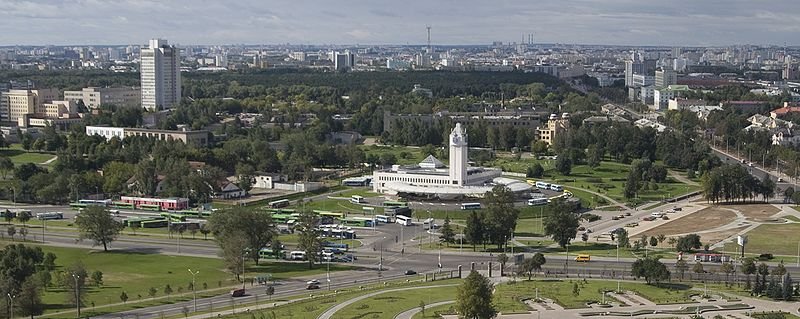 Panoramic view of Minsk, Belarus
Panoramic view of Minsk, BelarusSource: https://commons.wikimedia.org/wiki/File:Belarus_-_Minsk_-_Moskovski_bus_station_01.jpg
Author: Redline

Minsk (Belarusian: Мінск, Russian: Минск) is the capital and largest city in Belarus. It is also the headquarters of the Commonwealth of Independent States. The city covers 308 sq km (119 sq mi) and has a population of 1.8 million people (2011 estimate) within a metropolitan area of 2.1 million people.
Minsk is located on the slopes of Minsk Hills, at 280 m (920 ft) above sea level. The city is surrounded by forested lands, some of which have been converted into parks. The city experiences a humid continental climate. July is the warmest month, when the average high temperature rises to 22.4°C (72.3°F). January is the coldest month with average low temperature of -7.9°C (17.8°F).
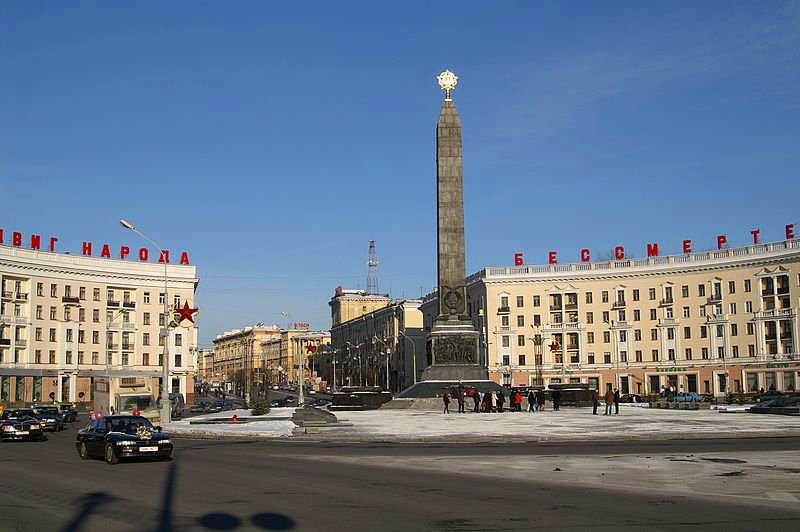 View of the Victory Square in Minsk
View of the Victory Square in MinskSource: https://commons.wikimedia.org/wiki/File:Victory_square,_Minsk_01.jpg
Author: Redline

The city of Minsk traces its history to as early as the 9th century, when the Early East Slavs settled in the area. Minsk appeared in documented history for the first time in AD 1067, and is today referenced as the founding year of the city.
Minsk managed to escape Mongol invasion when it swept through Europe in 1237-39. It became part of the Grand Duchy of Lithuania in 1242, and later, in 1413, part of the Polish-Lithuanian Commonwealth. By the mid-16th century, Minsk has become an important economic and cultural center in Eastern Europe, and a religious center for the Eastern Orthodox Church.
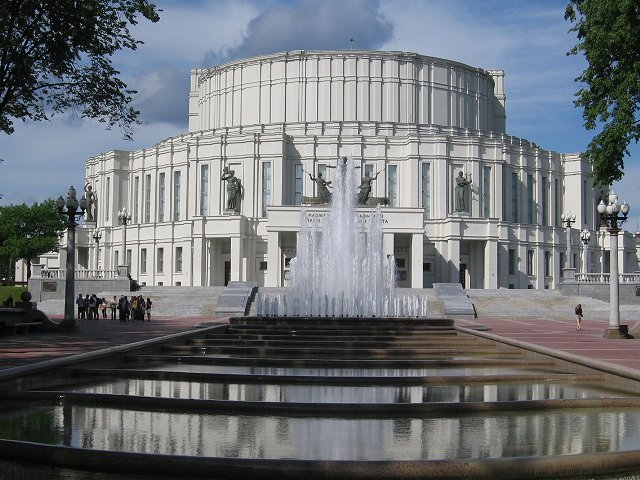 Opera and Ballet Theater of Minsk, Belarus
Opera and Ballet Theater of Minsk, BelarusSource: https://commons.wikimedia.org/wiki/File:Theatre_opera%26ballet,_Minsk.JPG
Author: Gruszecki

In 1654, Minsk was invaded by Russian troops under Tsar Alexai, and incorporated into the Russian Empire. However, it falls back to Polish rule in 1667, under King Jan Kasimir of Poland. Then came the Great Northern War which brought Minsk under the occupation of Sweden and then Russia.
Russian rule over Minsk began a period of "Russianization" of the city. The political upheavals greatly affected Minsk, ushering a period of decline going into the 19th century, but by the mid-19th century, it was again growing significantly.
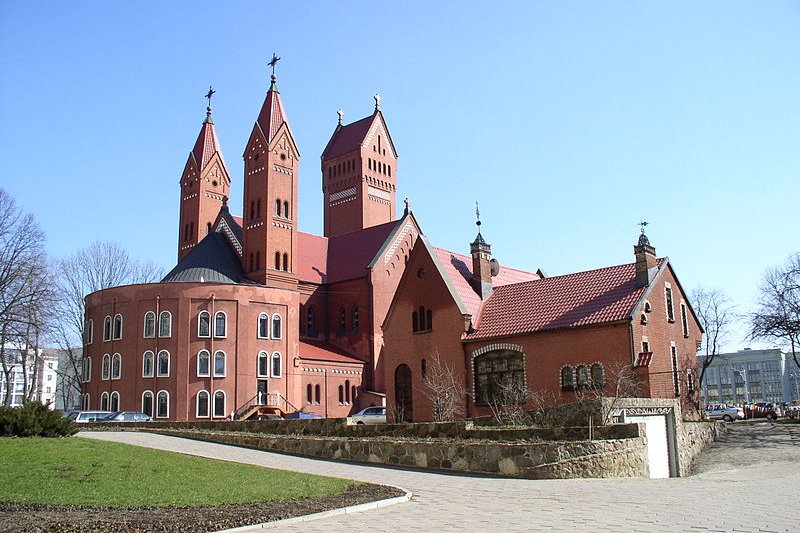 The beautiful Church of Saints Simon and Helena in Minsk
The beautiful Church of Saints Simon and Helena in MinskSource: https://commons.wikimedia.org/wiki/File:Belarus-Minsk-Church_of_Simon_and_Helena-3.jpg
Author: Hanna Zelenko

The Russian Revolution was another period of political turmoil for Minsk. In January, 1919, it became the capital of the Belorussian SSR. During the Second World War, Minsk was invaded by the Nazis in 1941 and was occupied until 1944, when it was recaptured by the Red Army. In the post-war era, the city underwent a period of reconstruction with mainly Stalinist architecture.
The fall of Communism in 1990 brought another round of change for Minsk. As the capital of a newly independent Belarus, it moved gradually towards a market economy. The city was hit by an economic crisis in the mid 1990s, but was again growing by the late 90s. Today it is a modern city with improving public infrastructure and a gradual increase in tourists.
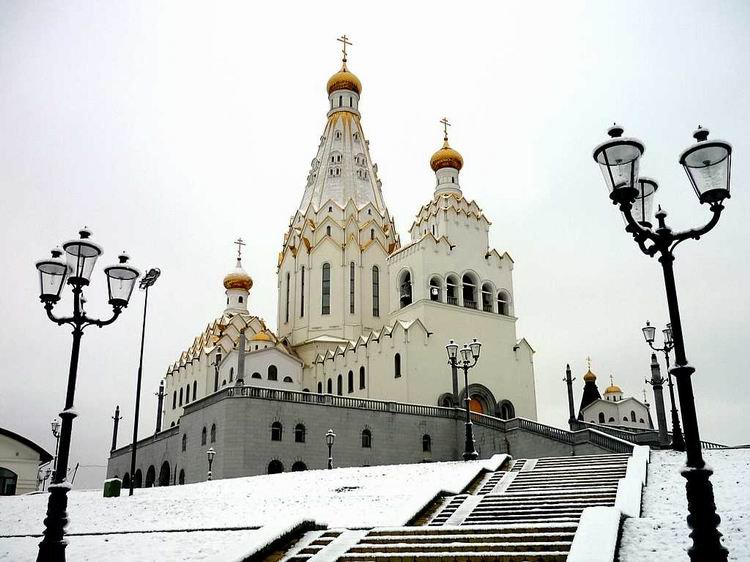 The Church of All Saints in Minsk
The Church of All Saints in MinskSource: https://commons.wikimedia.org/wiki/File:Vsekh_svyatykh_sobor_1998.jpg
Author: Ak1976

Visiting Minsk
Minsk International Airport (MSQ), located 42 km to the east of downtown Minsk, is the main international gateway to Minsk.Exploring Minsk
The public transport in Minsk comprises the tram, bus, subway and taxi. The cleanest and most efficient way to move about is to take the subway, Minsk Metro. Each ride costs 850 rubles.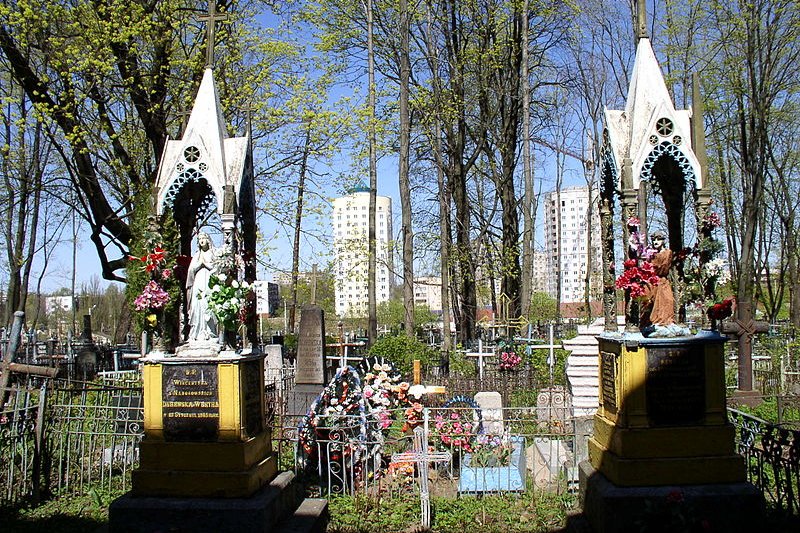 Calvary Cemetery, Minsk
Calvary Cemetery, MinskSource: https://commons.wikimedia.org/wiki/File:Belarus-Minsk-Calvary_Cemetery-9.jpg
Author: Hanna Zelenko

Sights & Attractions in Minsk
- Belarus National Museum of the Great Patrotic War
Museum with exhibits related to the war years in Belarus. - Church of Saint Peter and Saint Paul
The oldest church in Minsk, built in 1613 and restored in 1813. - Former Residence of Lee Harvey Oswald
This was where Lee Harvey Oswald lived from 1959 to 1963 before returning to the US, where he was alleged to have shot John F. Kennedy. - Mastatsky Salon
Art gallery showcasing the works of local artists. - St Mary Magdeline Church
Orthodox church built in 1847. It has an octagonal bell tower.
 Latest updates on Penang Travel Tips
Latest updates on Penang Travel Tips

Copyright © 2003-2025 Timothy Tye. All Rights Reserved.

 Go Back
Go Back